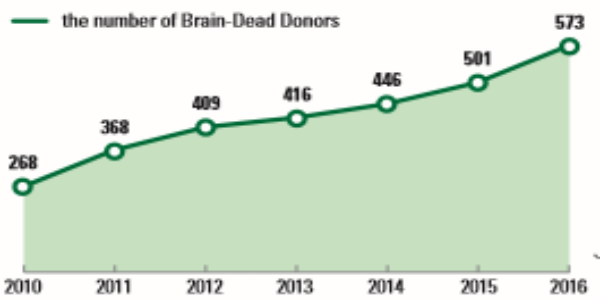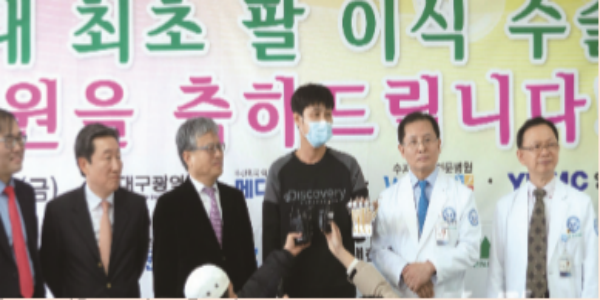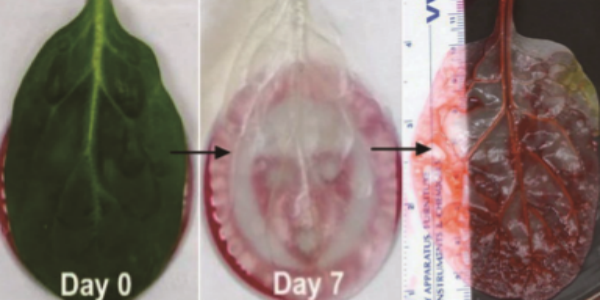Have you ever thought that Frankenstein’s ‘monster’, which was created by attaching separate body parts together, could actually exist in real life? What about the movie Faceoff where the main character is able to reconstruct his whole face in order to look like another person. Well, now, these fantasies which could only be seen in novels or movies are becoming reality through techniques called body transplants. The Sungkyun Times (SKT) now introduces a brief concept of body part transplantation, in particular brain transplantation, as well as new technologies.
What Is Body Part Transplantation?
Definition of Body Transplantation
Body transplantation is detaching a donor’s body part and attaching it to another patient’s body, or the transplanting of body parts which are artificially made. Unlike organ transplantation which is the transplantation of only organs, body transplantation includes transplanting complete parts of the body such as arms, muscles, tissue, and blood vessels. Therefore, body transplantation can be understood as a wider field. The biggest difference between organ and body transplantation is that lots of organ transplantations take place with the donor normally found among the family; however, a body transplantation can only take place through a brain-dead patient, except with skin grafts. Like organ transplantations, body transplants are not easy procedures. First, doctors have to check whether a donor’s body and the patient’s body match. Moreover, even if a donor exists, there is a high possibility that the body part might be infected with a virus, so not all patients are able to receive their transplant.
Body Transplantation in Korea

Korea regulates death only to cardiologic dead, not braindead. Therefore, body transplantations in Korea are much more complicated. To transplant body parts in Korea, a donor has to go through two stages of an ethics commission in order to judge if he or she is clinically braindead. After that, if the donor is judged as being medically braindead, then body transplants would be possible. There are voices, however, that the standard for being declared clinically brain-dead in Korea is too high and tricky. Unlike other countries, Korea includes brainwave tests in the criteria. For that reason, even if the patient’s guardian has agreed to judge a patient as being braindead, just a slight indication of brainwave can disapprove it. Some doctors are arguing that an unnecessarily high standard to declare a patient brain-dead will lower the number of brain-dead donors. Despite some concerns, the Korea Organ Donation Association (KODA) has declared that brain-dead donors have increased to 573 in 2016, and this figure shows a 14.3% increase compared to the previous year. Moreover, Korea’s PMP, which shows the number of brain-dead donors per 1 million people, has increased to 11 in 2016. For the first time, Korea’s PMP has achieved double digits, and is now abreast with Germany (10.8), and New Zealand (11.5).
Korea’s First Arm Transplantation

In 2017 February, Daegu W hospital conducted Korea’s first arm transplantation. The transplantation was performed by a surgery team composed of specialists from diverse medical offices. The patient had transplanted the donor’s left arm, and was treated in intensive care with rehabilitation treatment. Doctors were worried about an acute rejection of immunity response, but the patient’s condition improved greatly so they discharged him from hospital just a month after surgery. On March 31st, the patient who went through the arm transplantation was asked to pitch the first ball at a professional baseball opening game, but unfortunately, his condition worsened, and he had to be hospitalized. It seems that this surgery needs more time to see a positive outcomes, and if it goes well it will be the first successful arm transplant in Korea, and will also be a rare procedure for the world.
Brain Transplantation
About Brain Transplantation
One of the most notable and most actively researched is brain transplantation. Even with modern technology, it is still difficult to transplant the whole brain to another person; however, transplanting brain cells is possible and has also taken center stage in the field of brain transplants. Transplanting brain cells is the first step toward complete brain transplantation, so the medical community is expecting that complete brain implants will be possible in the foreseeable future. Recently, the former boxer, Muhammad Ali who was suffering from Parkinson’s disease had been given the transplanted brain cells of a miscarried embryo. There has been dispute about whose brain cells would be used in the transplantation. Research currently in progress has found that brain cell transplantation can be carried out by using cancer cells. It was known that some cancer cells contain neurons that can be transplanted to stroke patients. This research is also still in the process of development, but at the least it is expected to restore damaged brain cells.
Cybernetics
Even though the number of patients waiting for a transplant is increasing day by day, short supply has always been the biggest obstacle. To solve this problem, study into cybernetics is growing. Cybernetics is an academic field that applies organisms’ self-limiting control to mechanisms for the reason to study communication, control, and data processing, synthetically. Among the variety of cybernetics research currently taking place, headware is growing in popularity as a solution to the shortage of donors. Headware is a type of cybernetics implant, which could replace the actual brain with an artificial brain. Nevertheless some scientists argue that if complete headware replaces the human brain then a state of cyber zombification could occur, which means a person may have lost his or her humanism because of the transplanting procedure. Although there are some controversies, lots of doctors and scientists claim that if cybernetics can solve these concerns and are developed more, it could be a countermeasure to a complete brain transplant.
Brain Transplantation in Pop Culture
1. Criminal

Criminal is a movie based on transplanting a dead CIA agent’s brain into a violent offender who has an immature brain in terms of emotional development. The reason for the brain transplant in the movie is to observe information and find clues that the original brain has. The director of the movie said that he wanted to show that brain science has the possibility to help patients with immaturely grown emotions and intelligence through the movie. There have been movies about transferring memories before but this was the very first movie based on the theme of brain transplantation.
2. The Change

Published in 1999, the Japanese novel The Change is a book about a patient who is suffering from identity problems after brain transplantation. The book shows that unlike organ transplantations, body transplantation, especially brain transplantation is related to many other aspects of the body. With a given brain, the patient might have the possibility of confusing their identity with the donor’s. Doctors who are skeptical about brain transplantation claim that the problems that the character suffers in the book can actually happen in real life.
New Technologies of Body Transplantation
Being a science of the future, there are tremendous amounts of research in body transplantation being carried out all over the world, in order to develop the technology to support it.
Complete Head Transplantation

At the end of this year, Italian doctor Sergio Kanabero will challenge to conduct a complete head transplant for the first time. The subject of the transplantation is 32 years old Russian, Valeri Seupridonopeu. The procedure of the transplantation starts by cooling the donor’s and patient’s bodies so as to connect the patient’s head to the donor’s body. After that, doctors will cut the spinal cord with a tube and connect the blood vessels, then connect Seupridonopeu’s head to the donor’s body and stich them together. Until now, the doctors and scientists have failed to transplant a complete head because of the problems with cutting the spinal cord. According to the doctors of KODA, cutting a spinal cord with a knife is not sophisticated enough and it is like cutting a sheet of paper with an axe. For this surgery, however, doctor Kanabero claims that using a knife made out of diamond would be a solution. Despite some skeptical opinions, Kanabero argues that the probability of success will almost reach 90%, and that the medical community should focus on the importance of this transplantation.
Developing Heart Tissue Using Spinach Cells
With modern science, scientists could soon make artificial organs and body parts using a 3D bio-printer. Nonetheless, existing biotechnology does not allow the formation of capillary blood vessels that send oxygen, blood, and nutrients and essential molecules to all blood vessels necessary for tissue growth. Until now, it was impossible to form capillaries. On March 22nd, Science Daily reported that an experiment developing human heart tissue using spinach cell has succeeded. By successfully executing the experiment using spinach cells, this problem is expected to be solved. The University of Worcester Polytechnic research team injected liquid similar to blood in to drained spinaches leaf, and grew heart muscle tissue on it. They then grafted the completed spinach cell to the heart and it was able to replace the dead heart muscle cells. This experiment has had a massive impact because it has opened a new path to replace human’s organs or cells with the use of plant tissue. The medical community expects that this experiment can enable the reforming of cartilage cells, bone cells, and even heal wounds.
Neural Bypass
Technology Neural Bypass technology is a technology used to connect the brain to other body parts, even when the spine has been damaged. Not going through the damaged spine, researchers can directly connect the brain with other body parts. The research team transplanted a microelectronic sensor chip inside the cerebral cortex of a paralyzed patient. Pea-sized sensors analyze the signals of the motor cortex collected using a kind of artificial intelligence algorithm and then sent commands directly to the specified body region. Through surgery, Ian Burke Hart, the paralyzed patient could take a water bottle with his right hand and perform sophisticated movements with the water cup and a guitar. The medical community claims that this surgery has brought about the solution of connecting the spine and spinal cord during body transplantation, since body transplantation is not simply a connection between the body of the original body and the donor, but eventually the body’s brain, brain nerves and the donor’s body. The most problematic part of body transplantation is the connection of the brain, to the spinal cord, and the body. This connection problem is expected to be supplemented by neural bypass technology.

During the 1990s, people thought that it was perfect nonsense to carry our phones in our pockets, but now we are living in the future that we once dreamed of. If the scholars and scientists regarded that our ideas were just fantasies based on imagination, then the world would not have come to be where it is now. Many of the techniques which are taken for granted have gone through many trials, including the body transplant. It is true that there are still many skeptical opinions, and voices regarding such experiments as reckless challenges. However, people should not neglect the fact that the world has been made through such reckless challenges.
